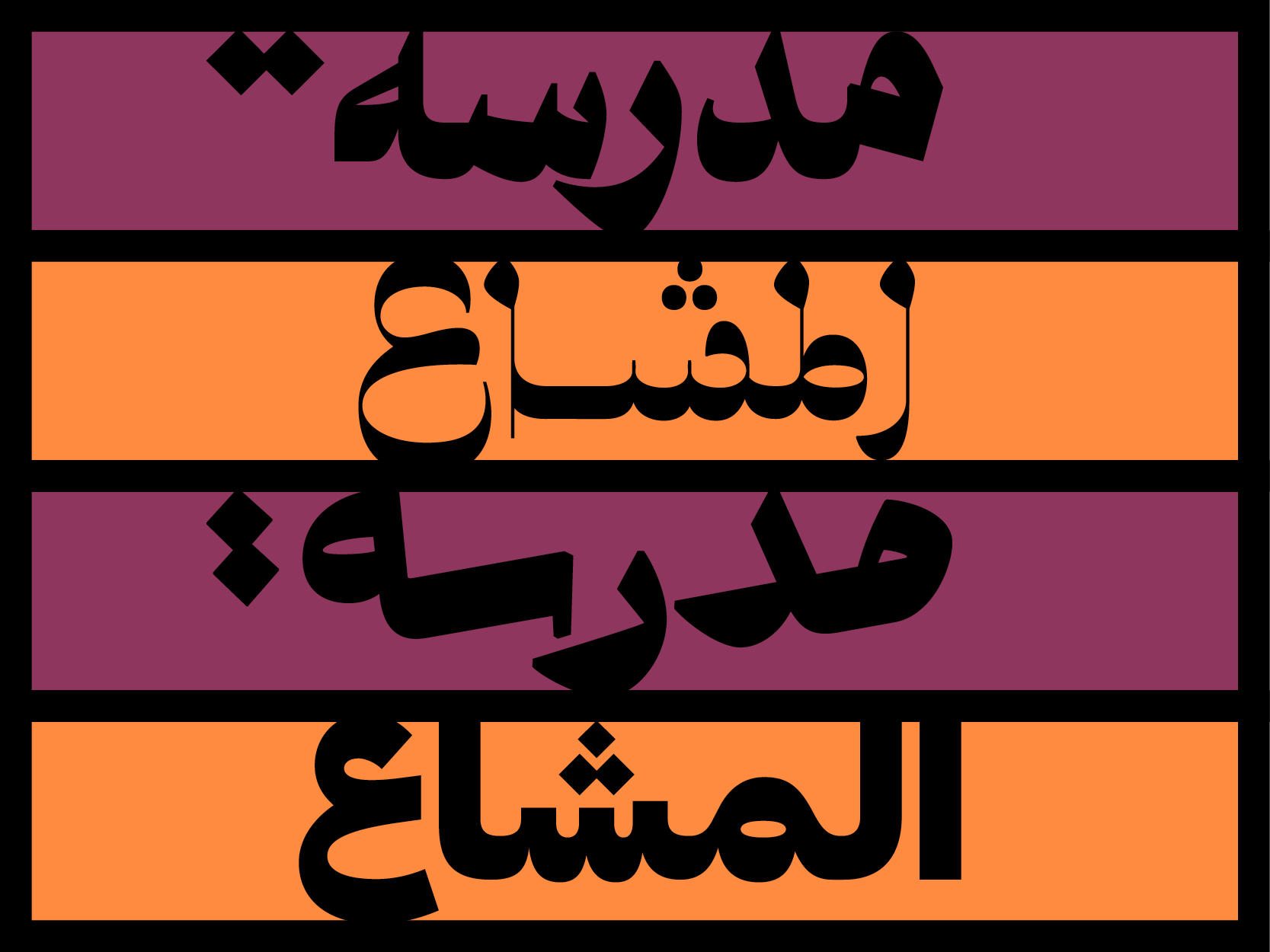Alternative pedagogy for Arabic type design
Our topic of research is driven by our desire as educators to open the discipline of type design and our need as practitioners to expand it. We see type as a vehicle of/for cultures, identities, and politics as well as a medium to critically discuss the impact of colonialism on a language and its visual forms.
Across the countries using the Arabic script, occasional Arabic type design classes and workshops are available, nevertheless typefaces developed in such a short amount of time rarely get completed, let alone published.
Type design master degrees are located mostly in Europe and Northern America, with a curriculum usually centering the Latin script.
In order to avoid the frame of Western design standards that can also occur in Arab design schools, we believe that we need to create alternative and non-linear pedagogical paths.
We want to imagine an agile pedagogy that operates through an alternative space/platform beyond the design studio or the design school, deeply collaborative and with the objective of creating and distributing Arabic typefaces.
SoC is the opportunity for us to define and design this alternative.
Our field of research and action will be:
Possible commission processes
- From establishing the brief and the standard for our typefaces (character set / weight / style) to testing fonts: we want to collaborate with graphic designers and more broadly type users.
- We want to design and publish fonts that graphic designers need, instead of fonts that type designers want to draw; filling the gaps between type designers and type users.
Possible resources
- Most existing archives are located in Europe and have been collected during the colonial period. However, new initiatives dedicated to Arab graphic design and Arabic letterforms archives are emerging in the MENA region.
- Looking into collaborating with existing platforms
- Using type design as a medium to both research and revive Arabic letterforms from the archives.
Tentative design processes
- Designing collectively to move away from a self centered and isolated practice where typefaces take years to complete.
- Experimenting with hierarchy and relation between scripts in the case of multi script typefaces (ie: Arabic + Latin).
Knowledge diffusion
- Rethinking the notion of copyright and ownership in type design and trying to twist it.
- Exploring the possibilities of open source typefaces, tools, and/or curriculum.
- Proposing good quality free typefaces for users who can’t afford to buy any.
People
